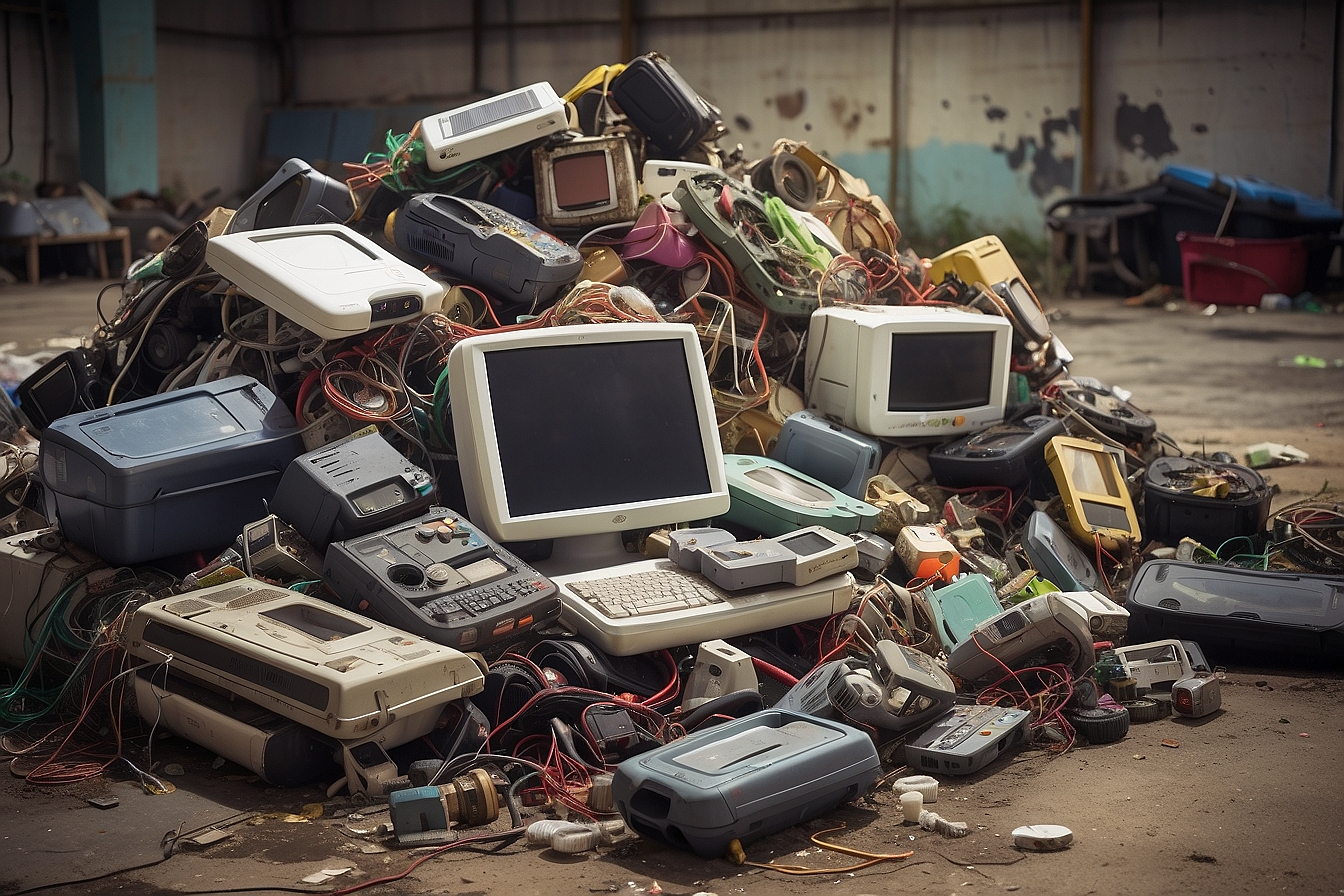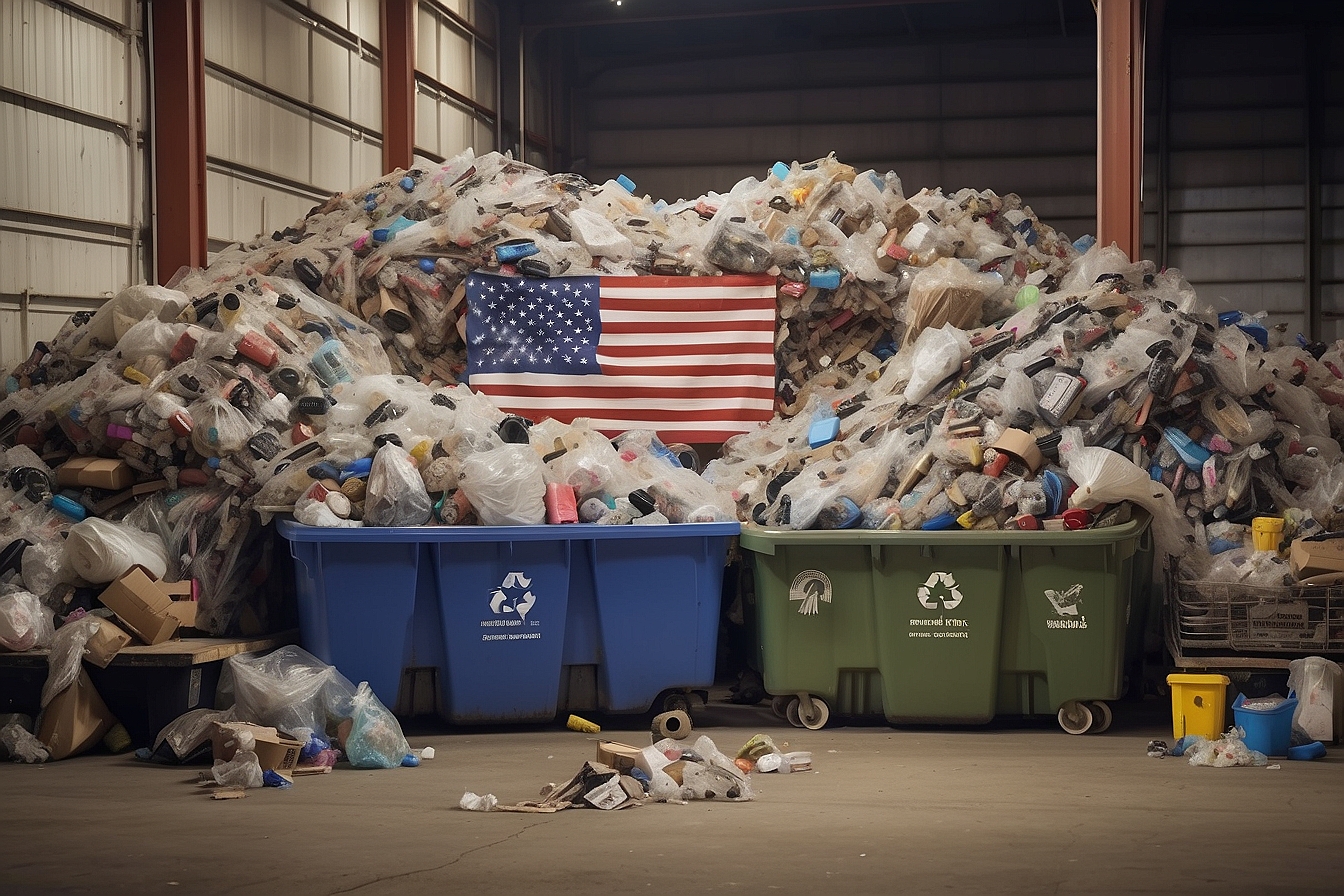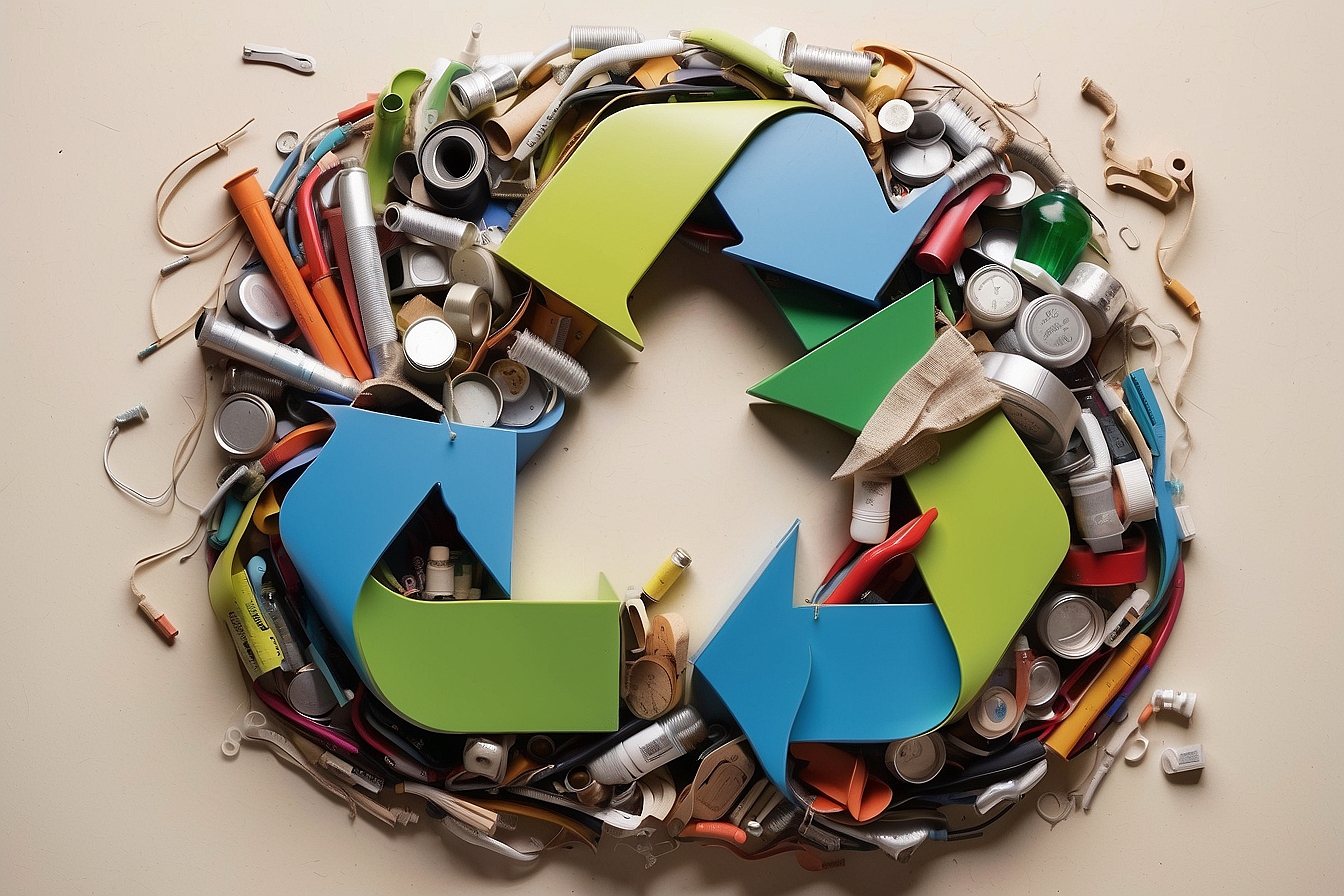Once you’ve poured that last drop of juice or spooned out a final taste of yogurt, you (hopefully) throw that plastic container into a big blue recycling bin. You (hopefully) encourage your friends to do the same. You feel good about Great Pacific Garbage Patch …1 It won’t be trucked to a landfill and left to decompose for thousands of years… It won’t be burned… Or will it? So what really happens to the plastic in your big blue bin?
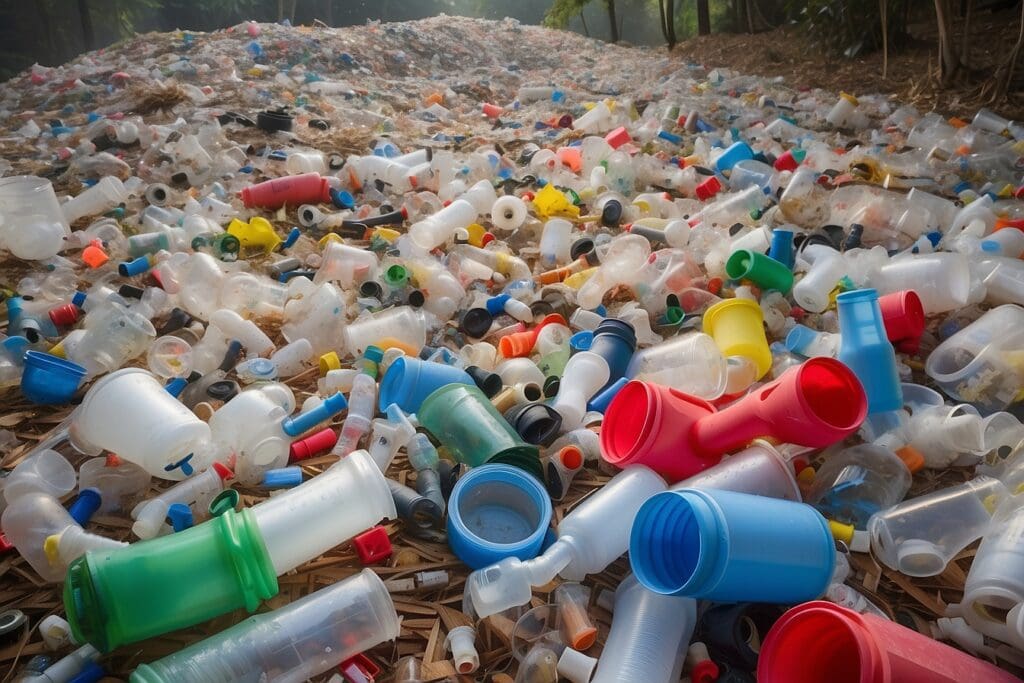
First, the plastics are sorted by hand on a conveyor belt. They are compacted and baled. These bales are sold to a reclaiming facility. According to Washington State’s Department of Ecology, “[a]t this point, entire bales can be rejected as unclean or ‘contaminated’ by the wrong colors or types of plastic.”2Second, the approved plastic is washed and ground into small flakes. The flakes are dried, melted, filtered, and formed into pellets, which are sold to manufacturing plants that make new plastic products. PET (#1 plastics) are turned into textiles for your carpet or fleece jacket. HDPE (#2 plastics) are used to manufacture new plastic bottles.3 For more on what the numbers on your plastic goods mean, read here .
Third, some plastics get sent to local reclaiming facilities. For example, Trex Company in Virginia recycles 1.3 billion U.S. grocery retail bags annually and then manufactures the waste into wood-alternative decking, railing, and fencing products.5 But companies like Trex are not common in the United States. In fact, Trex alone recycles 70% of all plastic bags in the U.S. recycling system.6
Then here comes the dirty side of our recycling system…
Remarkably, most recycled plastics in the U.S. are shipped to China. China also collects one-third of the United Kingdom’s plastics,7 and a whopping 82% of all plastics recycled in Winnipeg, Canada!8 The plastic’s trip halfway around the world wastes tons of fossil fuels! The only sunny side to this statistic is that because the U.S. imports more than it exports, the plastics are sent in shipping containers that might otherwise be empty… so not quite as much fossil fuel wasted, but regardless it is still a waste.
In China, the recycling of plastics is often an environmental and health hazard. According to Van Jones, a human rights activist and President Obama’s former advisor on green jobs, “Recycling of plastic in many developing countries means the incineration of the plastic, the burning of the plastic, which releases incredible toxic chemicals and … kills people.”9 Burning plastic such as PVC releases dioxins, which can cause cancer in people. Because recycling procures little profit (and even less during the global economic downturn), workers often labor for little money and in unfair conditions. Keep in mind that Asia is home to 60% of the world’s 350 million child laborers.10
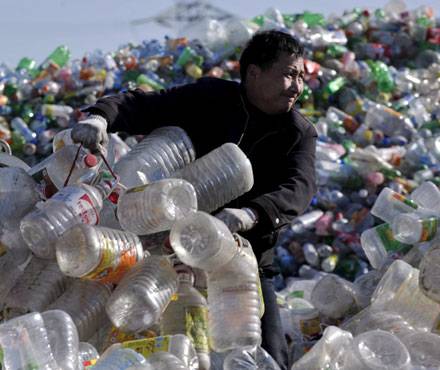 11
11
And what happens to the majority of traveling plastic that (thankfully) isn’t burned? Most plastics are NOT recycled. Instead, these plastics are “downcycled” into durable goods like fly swatters and dolls. Durable goods are not recyclable. So, most plastic in your big blue bin will get a second life (maybe even a third), but then it will inevitably end up in a landfill.12 The recycling symbol’s little green arrows suggest that products are remade into other products over and over again, but that’s typically not the case.
So what about all of the plastics that we do NOT try to recycle by placing them in the big blue bin? In 2009, only 7% of the plastic generated in the U.S. was recovered for recycling.13 That number is low, in part because plastic is more confusing than paper or glass. Most Americans simply don’t know much about plastic. Plastic production contributes to 10% of U.S. oil consumption.14 However, about 72% of Americans don’t even know that plastic is made of petroleum!15 Moreover, 40% of Americans think that plastic biodegrades and it most certainly doesn’t.16
Though most plastics are branded with a number surrounded by a recycling symbol, that symbol does not necessarily mean that plastic container is recyclable. Lots of foods, like yogurt and cottage cheese, are packaged in #5 plastic containers, but recycling facilities rarely accept #5 plastics.17 There are about seven different types of plastic in circulation today, and they cannot all be mixed. Plastic bottle caps don’t go with plastic bottles,18 and grocery bags can’t be reused in the same way as clothing-store bags. That’s because clothing-store bags are generally thicker and are made from the resin LDPE 4. Supermarket bags are typically thinner and made of HDPE 2. When a stray LDPE 4 wanders into a batch of HDPE 2 during recycling, it can contaminate and weaken the resulting plastic.19
What is a consumer to do? Before recycling plastics, learn the proper procedures for your community’s recycling program , because improper recycling can do more harm than good. And remember, reducing and reusing are always more powerful than recycling. Instead of buying bottled water or juice and then worrying about whether fumes from that recycled plastic bottle will end up in a child’s lungs in China, carry a stainless steel water bottle or if at home, grab a glass and pour yourself some filtered tap water ☺


